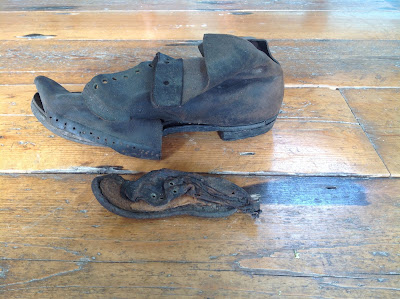The Hunger House by Conor McGuire
The Famine was a seismic event in 19th century Ireland, and is probably the most universally known point in Irish history. With this in mind, it comes as no surprise that historical fiction set in Ireland has been dominated by this event. However, The Hunger House branches out in a new and widely neglected direction by exploring a different facet of life in 19th century Ireland; the workhouse. We are delighted at the Irish Workhouse Centre to be stocking this inspiring novel by Mayo writer, journalist and artist, Conor McGuire which is already an Amazon No. 1 Bestseller.
The novel tells the story of intelligent Bridget Hennigan, who takes up the post of Matron at Ballina workhouse. Her quick mind and professional nature are a challenge to the all male administration which makes up the Board of Guardians. To make matters worse, the resident medical officer Dr Whyte is a nasty piece of work. Bridget realises that only she can stop him but at what price?
 |
| Conor McGuire delivering signed copies of his book, with staff members Francis Robinson and Elizabeth Carter |
What I love about this book is that it is fiction interlaced with factual research. The research was a by-product of a weekly column Conor writes for 'The Western People' newspaper. The incidents and stories he discovered became the bedrock of the novel but the reader never feels overburdened by information. There is no sense that the narrative is just an excuse for Conor to showcase his knowledge of workhouse history. For example, in the opening chapter we get to meet the workhouse architect, George Wilkinson, surveying the site of Ballina workhouse. The description of clerks, equipment and horses is beautifully atmospheric and especially appealed to me because I find it incredible to imagine how the workhouses were built without any modern machinery. I found myself drawn into the description of George Wilkinson as a man, and didn't even notice that I was learning about Victorian engineering!
Another point which I need to mention, is that it is important to read about a workhouse Matron who was compassionate. It is true that there were many callous and cruel staff members in Ireland's workhouses, but there were also those that were sympathetic to the pauper's plight. I often wonder about the Matron of Scariff workhouse who died in service and was so well regarded that the paupers petitioned the Board of Guardians to attend her funeral. It must have been a hard life for her, caught between the faceless authority of the British Goverment, the weight of the Board of Guardians, and her own fragile position as a professional women in an era when that term was practically unknown.
Conor is a beautifully evokative writer, and reminds me of the hugely talented Susanna Gregory. In short, The Hunger House is what good historical fiction is all about. Readers are transported into the lives of Conor's characters, but equally are taken back to 1840's Ireland. Our book stock at The Irish Workhouse Centre is mostly non-fiction but I will happily be recommending this book to visitors who come from our tour and would like to find out more about the experiences of workhouse staff and inmates.
The Hunger House is 15 euros at The Irish Workhouse Centre, and we have a limited supply of signed copies! This book is also available online via amazon.
Author: Elizabeth Carter



Comments
Post a Comment